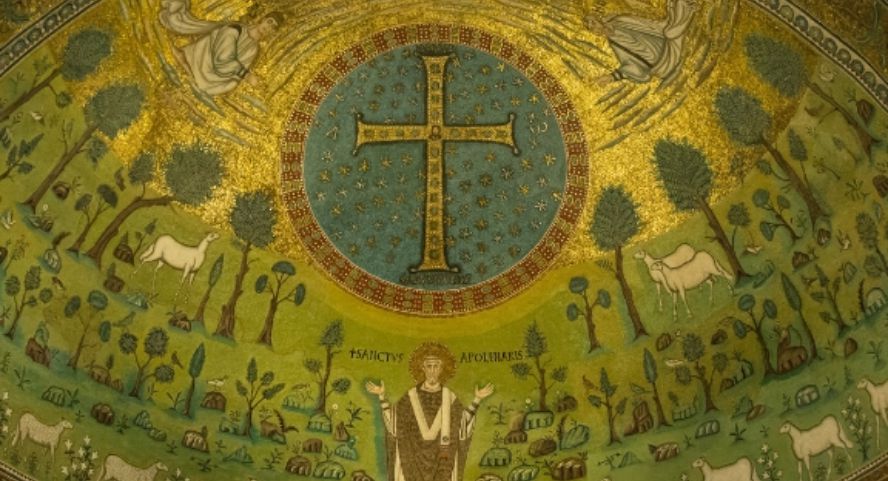John the Baptist and Fasting
Abstract
The Gospels passages describe John the Baptist’s ascetic behaviour in the Judean desert, eating locusts and wild honey, wearing garments made of camel hair. The food choices of St. John are analysed in comparison with the practice of nazirite, and also on the light of Eastern tradition, mostly spread in Syriac Christianity, which interpretation differs, underlining a particular form of ascetism completely characterised by vegetables. Commentaries, mostly dating back to the 4th and 5th centuries, explain the word ‘akrides’ as a particular vegetable. Furthermore, the celebration of St. John’s Eve, as a result of medieval western development, is nowadays characterized by abundance of food, in contrast, with the Gospel description of the life of the Baptist, are compared with the tradition of charivari, known since the Middle Ages.
Keywords:
Apocrypha, John the Baptist, locust, fasting, solstice, charivariReferences
Epiphanius Salaminis, Panarion, in: Ancoratus und Panarion haer. 1-33, ed. K. Holl, Berlin – Boston 2013. (Crossref)
Euthymius Zigabenus, Commentarii in Matthaeum, PG 129, 107-766.
Hieronymus, Dialogus adversus Pelagianos, ed. C. Moreschini, Turnhout 1990.
Jacobus de Vitriaco, Historia Orientalis, in: La traduction de l’Historia orientalis de Jacques de Vitry, ed. C. Buridant, Paris 1986.
Jacobus de Voragine, Legenda aurea, ed. G.P. Maggioni, Florence 2007.
Petrus Comestor, Historia scholastica, PL 198, 1049-1722.
Pseudo-Athanasius Alexandrinus, Fragmenta in Matthaeum, PG 27, 1363-1390.
Pseudo-Johannes Chrysostomus, In oraculum Zachariae redditum et in conceptionem Elisabet, PG 50, 785-788.
Serapion, Vita Iohannis Baptistae, in: Α New Life of John the Baptist, ed. A. Mingana, Bulletin of the John Rylands Library 11, Manchester 1927, p. 234-287.
Tatianus Assyrius, Diatessaron, ed. H.W. Hogg, ANF 9, Peabody 1995.
Theophylactus, Enarratio in evangelium Matthaei, PG 123, 143-488.
Agamben G., Stato di eccezione, Turin 2003.
Averincev S.S., Sofija-Logos. Slovar, Kiev 2006, p. 215.
Barnaveli M., The Meaning of the Words mkali (locusts) and veluri tapli (wild honey) Mentioned in the Gospel, “The kartvelologist. Journal of Georgian studies” 27/12 (2018) p. 96-121.
Benedict XVI, Giovanni Battista figura centrale del Vangelo. Angelus del 24 giugno, “Avvenire” June 25th (2012), in: https://www.avvenire.it/chiesa/pagine/angelus-del-24-giugno-2012 (accessed: 04.05.2023).
Bochart S., Hierozoicon, sive de animalibus sacrae scripturae, Leipzig 1796.
Brock S., The Baptist’s diet in Syriac Sources, “Oriens Christianus” 54 (1970) p. 113-124.
Delmulle J., Sur une acception médiévale du lat. locusta désignant une herbe sauvage comestible, “Archivum latinitatis Medii Aevi” 74 (2016) p. 67-88. (Crossref)
Djurović Z., Le ἀκρίδες di Mt. 3,4: ‘locuste’ o ‘vegetali’?, “Sabornost” 2 (2008) p. 43-59.
Fitschen K., Serapion von Thmuis. Echte und unechte Schriften sowie die Zeugnisse des Athanasius und anderer, Berlin – New York 1992. (Crossref)
The Dead Sea Scrolls, Study Edition, ed. F. García Martínez – E.J.C. Tigchelaar, Leiden 1998.
Gie S., Cacciatori di miele, “Slowfood” 54 (2012) p. 42-44. (Crossref)
Herzfeld Cappelli I., Digiuno, Alcool, droghe e addestramento quali componenti principali delle cure mediante la trance e la possessione in alcune società tradizionali, in: Il cibo culturale: dal cibo alla cultura, dalla cultura al cibo, ed. A. Guerci, Genoa 1999, p. 207-215.
Kelhoffer J.A., John the Baptist’s ‘Wild Honey’ and ‘Honey’ in Antiquity, “Greek, Roman, and Byzantine Studies” 45/1 (2005) p. 59-63.
Kelhoffer J.A., ‘Locusts and wild honey’ (Mk 1.6c and Mt 3.4c): the status quaestionis concerning the diet of John the Baptist, “Currents in Biblical Research” 2/1 (2003) p. 104-127. (Crossref)
Kelhoffer J.A., Did John the Baptist Eat like a Former Essene? Locust-Eating in the Ancient Near East and at Qumran, “Dead Sea Discoveries” 11/3 (2004) p. 293-314. (Crossref)
Kelhoffer J.A., The Diet of John the Baptist: “Locusts and Wild Honey” in Synoptic and Patristic Interpretation, Tübingen 2005.
Jewish-Christian Gospel tradition, ed. A.F.J. Klijn, Leiden 1992.
Matteini F., La non alimentazione: digiuno terapeutico e altre forme di rifiuto del cibo, in: Il cibo e il corpo: dal cibo alla cultura, dalla cultura al cibo, ed. A. Guerci, Genoa 1999, p. 397-405.
Meuli K., Gesammelte Schriften, v. 1-2, Basel – Stuttgart 1975.
Mills I.N., Zacchaeus and the Unripe Figs: A New Argument for the Original Language of Tatian’s Diatessaron, “New Testament Studies” 66 (2020) p. 208-227. (Crossref)
Apocrifi del Nuovo Testamento, v. 1, ed. L. Moraldi, Turin 1975.
Palomnik D., Itinerario in Terra Santa, ed. M. Garzaniti, Rome 1991.
New Testament Apocrypha: Gospels and Related Writings, v. 1, ed. W. Schneemelcher – R. McLachlan Wilson, Louisville – London 1991.
Šedinová H., ‘Esca eius erant locustae’: The origin and meaning of the imaginary quadruped ‘locusta’, “Listy filologické” 138/3-4 (2015) p. 231-268.
Stegemann H., Die Essener, Qumran, Johannes der Täufer und Jesus. Ein Sachbuch, Freiburg im Breisgau 1993.
Strömberg R., Griechische Wortstudien. Untersuchungen zur Bennenung von Tieren, Pflanzen, Körperteilen und Krankheiten, Gothenburg 1944.
Walter P., Mythologie chrétienne. Fêtes, rites et mythes du Moyen Âge, Paris 2003.
University of Wrocław https://orcid.org/0000-0002-7479-0282
License

This work is licensed under a Creative Commons Attribution-NoDerivatives 4.0 International License.
Papers published in Vox Patrum are covered by the Attribution-NoDerivatives 4.0 International (CC BY-ND 4.0) licence. Authors and users can use published works licensed under the CC-BY-ND since 2018. For earlier publications, copyrights are available under fair use rights in accordance with the Act of February 4, 1994 on copyrights and related rights.







